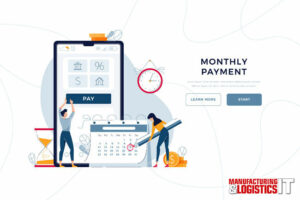By Terri Knowles, freelance writer.
In the internet age, it’s sometimes easy to forget that customer service sometimes requires an old-school approach. Your clients have a problem, you make a work order, and your field team goes there to resolve it.
While this process sounds simple, it could become a proper logistical nightmare, a nightmare that simple mobile apps could solve. With that in mind and without further ado, here’s how mobile apps can help revolutionize service management.
1. Work order management
One of the biggest problems with field teams is that, in the past, they had to go out, complete their task, and then get back to get a new work order. They might even pass their next location while returning without knowing it. With the help of mobile apps, their work orders can be created in real time so that they can check them out as soon as these orders are created.
This helps in so many ways. First of all, you get to save gas on unnecessary return trips. Second, you get to increase client satisfaction since the speed of response (when your field team arrives) is a huge part of the customer experience. Third, your field teams will feel like their talents and their time are used more efficiently. The last thing they want is to feel that you’re, somehow, wasting their time.
These work orders are often quite elaborate, so your field teams will get all the relevant information before reaching the location. They can even just check it via an app without bothering anyone back at the headquarters.

2. Scheduling and dispatching
With the help of the right mobile app for field service, schedule changes are made in real time, and everyone is immediately aware of the fact. If you’ve ever made a schedule or worked as a dispatcher, you know that the situation changes by the minute. Sometimes, a client will figure it out on their own. At other times, the problem will resolve itself. However, these last-minute changes can disrupt your entire schedule if you’re not using an app.
Dispatching can also be made automatic. An algorithm can review the schedule, track the GPS of each team, and assign the next task to the team with optimal conditions. This can be done even with just one team. Finding the right spot in the schedule is not easy, but this way, it can be made easier.
Even if you don’t want to automate the process fully, you can have a human dispatcher review and edit it. It will still save time and deliver optimal results. It’s still faster than having to do it all manually. Not to mention that this will make your field team’s response time faster.
3. GPS and location tracking
Job assignments are usually determined by the team's proximity and the task's complexity. The closest team gets the priority unless they’re too busy, and their current task won’t be over in a while. Keep in mind, nonetheless, that from the standpoint of your business, it’s not just the response time that matters. It’s also the mileage and the fact that you don’t want your teams idling too long. In other words, the GPS and location tracking enabled by these apps will enable more precise job assignments.
Another massive advantage of this is the chance to do geofencing. This means that you can set your teams in locations around the perimeter and get a head start when the requests start rolling in. You can track your teams across the map, which means you can adjust to this in real life. This will also drastically improve your emergency response, one of the highest-rated features for any field team. This is what the field team is made for in most industries.
4. Asset and inventory management
Your field team needs to be quick and mobile but also have all the tools and materials they need for the day. Ideally, they would stock up to have everything they need for a single trip and then head back out.
Mobile apps can be quite handy here in many ways. Unlike the rest of your IT landscape, these are actually quite simple to navigate.
First of all, a field team returning to the headquarters can request that the tools/materials they’ll be taking next be prepared so they can be quickly loaded onto the truck. At the same time, they can request that it be brought to the spot in case they can’t leave or in a scenario where a smaller vehicle can deliver this item.
Via an app, the transparency is a lot higher. Namely, you get to see the stock back at the warehouse, while people from the headquarters (managers, fleet managers, and dispatchers) can see the stock currently in use. This can improve inventory management and help ensure you never run out of stock.
5. Reporting and analytics
Your field teams are the hardest to analyze before you see them in action. All the predictions and all the projections won’t mean much until the first actual numbers roll in. How long does it take them to respond? What’s their average successful resolution rate? How long does it take them to fix problems? What are their bottlenecks?
This is probably the easiest to analyze when you have a standardized reporting system, which is exactly what these apps can provide you with. Since they’re semi-automated and offer your field teams a chance to make a quick input, they’ll have the data of all the interactions and assignments. This means that no data will be left unused.
Lastly, it will also help you with future client interactions since your field teams can look up previous work history and spot recurring problems and relevant client information. Again, this is something that can lead to a better CX.
Wrap up
Developing an app has never been simpler, easier, and more efficient than it is today. This means you can either find the right app for your team (there are so many field service apps out there) or even develop a custom one. Even the existing ones can be heavily customized to meet the needs of your business.
- SEO Powered Content & PR Distribution. Get Amplified Today.
- PlatoData.Network Vertical Generative Ai. Empower Yourself. Access Here.
- PlatoAiStream. Web3 Intelligence. Knowledge Amplified. Access Here.
- PlatoESG. Carbon, CleanTech, Energy, Environment, Solar, Waste Management. Access Here.
- PlatoHealth. Biotech and Clinical Trials Intelligence. Access Here.
- Source: https://www.logisticsit.com/articles/2023/11/09/the-role-of-mobile-apps-in-revolutionizing-field-service-management
- :has
- :is
- :not
- :where
- $UP
- a
- across
- Action
- actual
- actually
- adjust
- ADvantage
- again
- age
- algorithm
- All
- also
- an
- analyze
- and
- any
- anyone
- app
- approach
- apps
- ARE
- around
- Arrives
- AS
- asset
- At
- automate
- Automatic
- average
- aware
- back
- BE
- become
- been
- before
- Better
- Biggest
- bottlenecks
- brought
- business
- busy
- but
- by
- CAN
- case
- Chance
- Changes
- check
- client
- clients
- complete
- complexity
- conditions
- could
- created
- Current
- Currently
- custom
- customer
- customer experience
- Customer Service
- customized
- CX
- data
- day
- deliver
- determined
- develop
- Disrupt
- do
- does
- done
- Dont
- drastically
- each
- easier
- easy
- efficient
- efficiently
- either
- Elaborate
- emergency
- enable
- enabled
- ensure
- Entire
- Even
- EVER
- everyone
- everything
- exactly
- existing
- experience
- fact
- faster
- Features
- feel
- field
- Figure
- Find
- finding
- First
- Fix
- FLEET
- For
- freelance
- from
- fully
- further
- future
- GAS
- get
- Go
- Goes
- gps
- had
- handy
- Have
- having
- head
- Headquarters
- heavily
- help
- helps
- here
- higher
- history
- How
- However
- HTTPS
- huge
- human
- ideally
- if
- immediately
- improve
- in
- In other
- Increase
- industries
- information
- input
- interactions
- Internet
- inventory
- Inventory Management
- IT
- itself
- Job
- jpg
- just
- just one
- Keep
- Know
- Knowing
- Last
- lead
- Leave
- left
- Life
- like
- location
- location tracking
- locations
- Long
- Look
- Lot
- made
- make
- management
- Managers
- manually
- many
- map
- massive
- materials
- Matters
- mean
- means
- Meet
- mention
- might
- mind
- minute
- Mobile
- mobile-apps
- more
- more efficient
- most
- much
- namely
- Navigate
- Need
- needs
- never
- New
- next
- no
- numbers
- of
- offer
- often
- on
- ONE
- ones
- optimal
- or
- order
- orders
- Other
- out
- over
- own
- part
- pass
- past
- People
- plato
- Plato Data Intelligence
- PlatoData
- precise
- Predictions
- prepared
- previous
- priority
- probably
- Problem
- problems
- process
- projections
- proper
- provide
- Quick
- quickly
- quite
- Rate
- reaching
- real
- real life
- real-time
- recurring
- relevant
- Reporting
- request
- requests
- requires
- Resolution
- resolve
- Respond
- response
- REST
- Results
- return
- returning
- review
- revolutionize
- Revolutionizing
- right
- Role
- Roll
- Rolling
- Run
- s
- same
- satisfaction
- Save
- scenario
- schedule
- scheduling
- Second
- see
- service
- set
- Simple
- since
- single
- situation
- smaller
- So
- SOLVE
- somehow
- something
- sometimes
- Soon
- speed
- Spot
- standardized
- standpoint
- start
- Still
- stock
- successful
- system
- Take
- taking
- talents
- Task
- team
- teams
- than
- that
- The
- their
- Them
- then
- There.
- These
- they
- thing
- Third
- this
- time
- times
- to
- today
- too
- tools
- track
- Tracking
- trip
- truck
- until
- unused
- use
- used
- using
- usually
- vehicle
- via
- want
- Warehouse
- Way..
- ways
- What
- when
- which
- while
- will
- with
- without
- words
- Work
- worked
- would
- writer
- you
- Your
- zephyrnet












